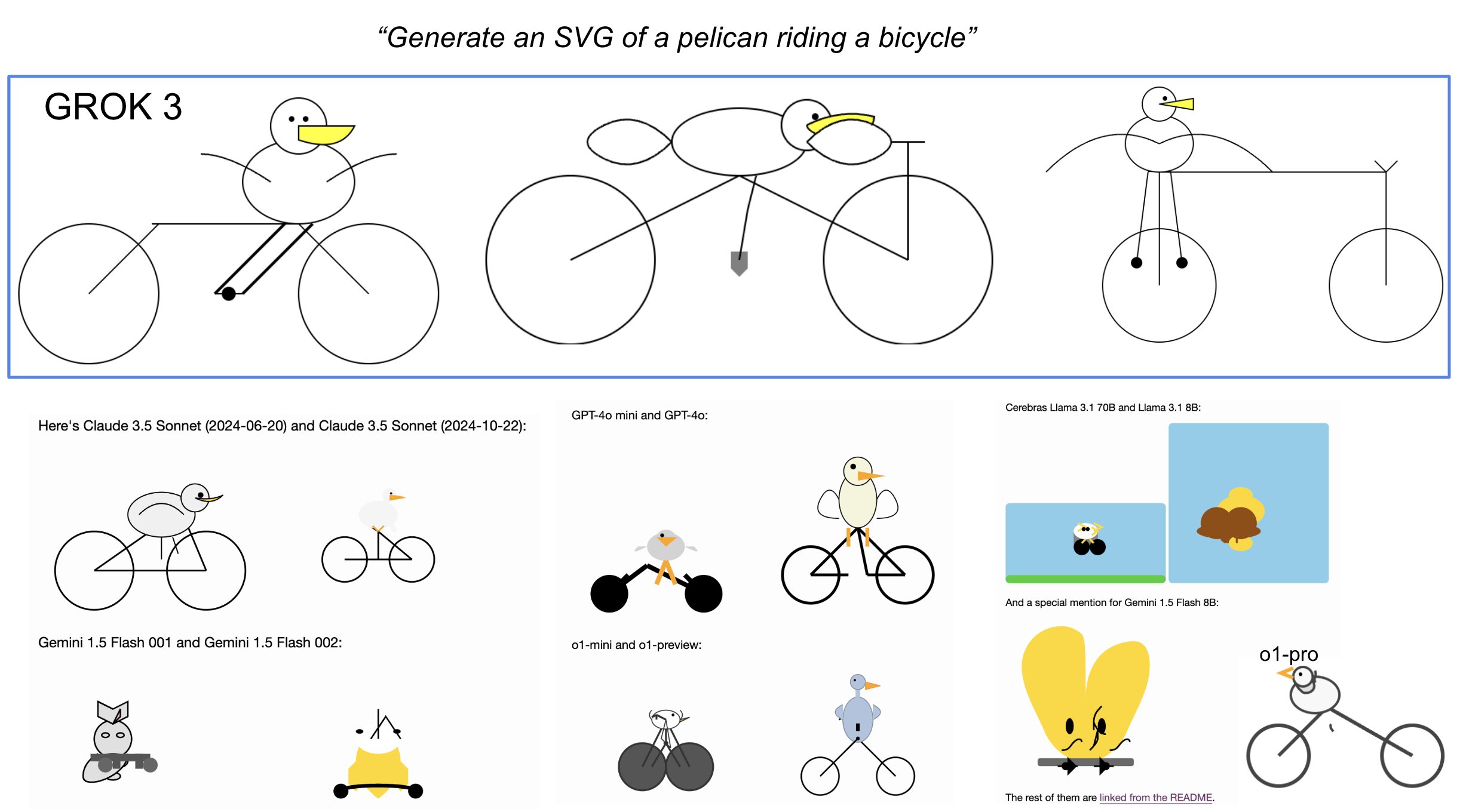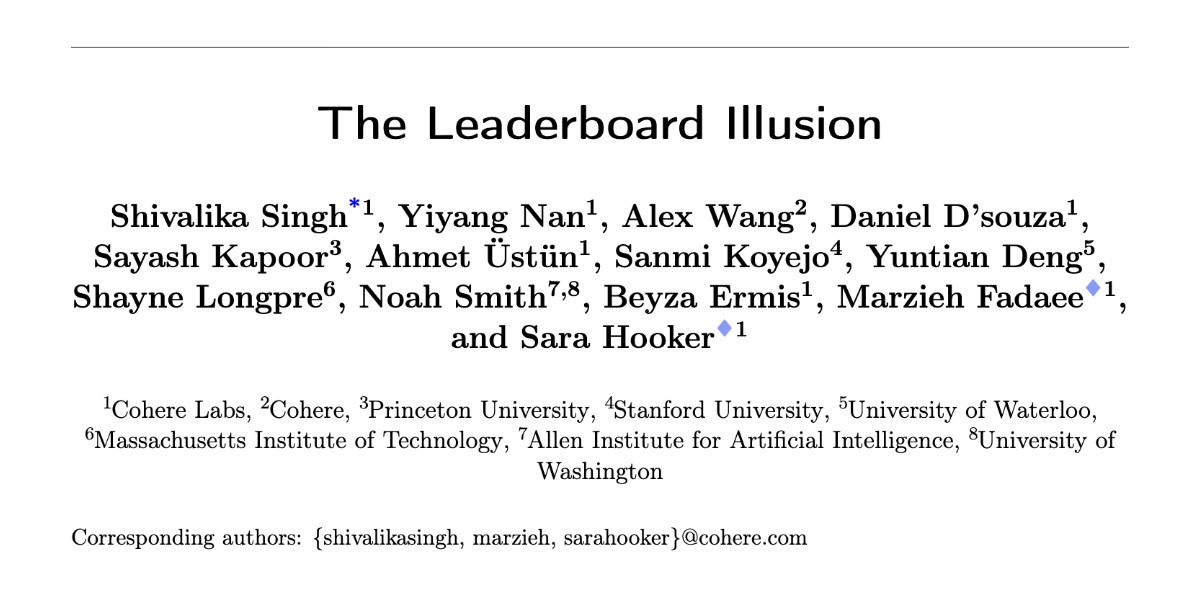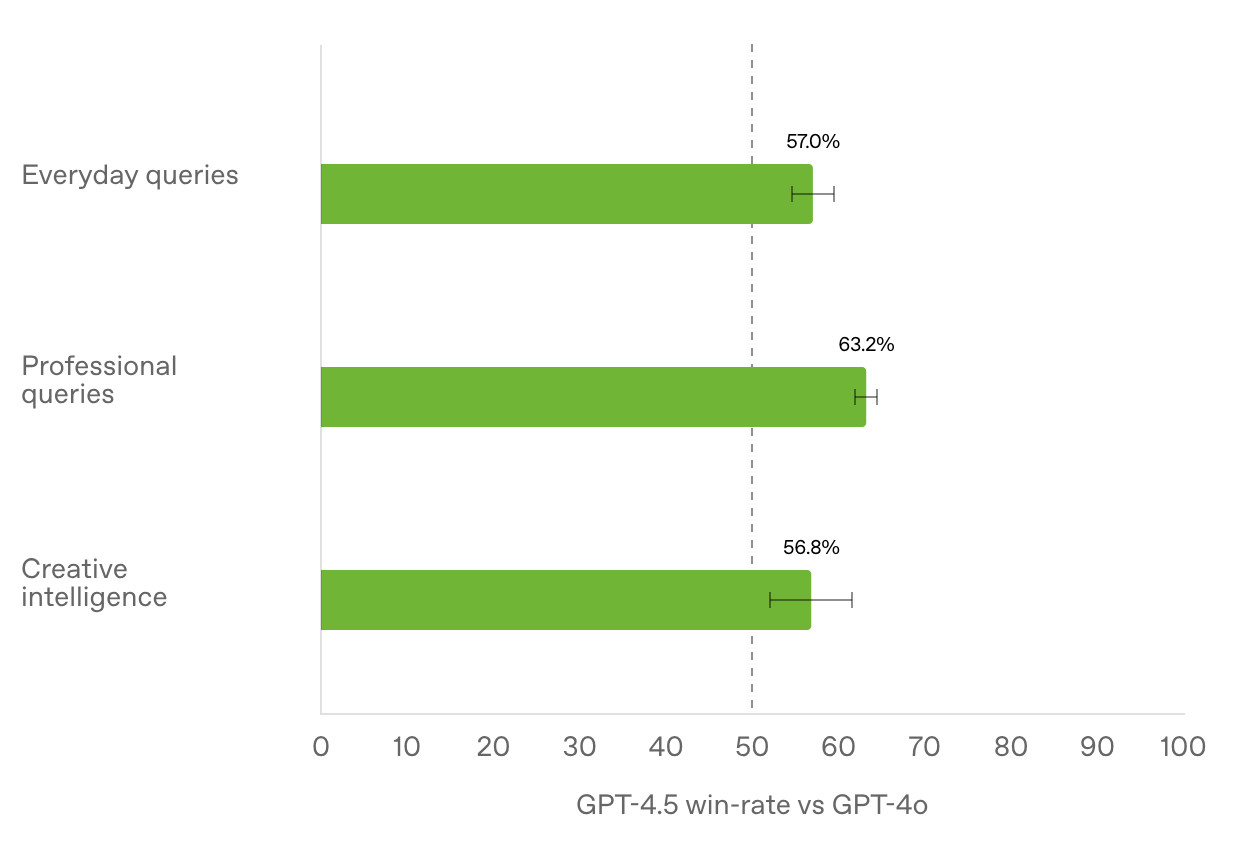31 posts tagged “andrej-karpathy”
2025
The term context engineering has recently started to gain traction as a better alternative to prompt engineering. I like it. I think this one may have sticking power.
Here's an example tweet from Shopify CEO Tobi Lutke:
I really like the term “context engineering” over prompt engineering.
It describes the core skill better: the art of providing all the context for the task to be plausibly solvable by the LLM.
Recently amplified by Andrej Karpathy:
+1 for "context engineering" over "prompt engineering".
People associate prompts with short task descriptions you'd give an LLM in your day-to-day use. When in every industrial-strength LLM app, context engineering is the delicate art and science of filling the context window with just the right information for the next step. Science because doing this right involves task descriptions and explanations, few shot examples, RAG, related (possibly multimodal) data, tools, state and history, compacting [...] Doing this well is highly non-trivial. And art because of the guiding intuition around LLM psychology of people spirits. [...]
I've spoken favorably of prompt engineering in the past - I hoped that term could capture the inherent complexity of constructing reliable prompts. Unfortunately, most people's inferred definition is that it's a laughably pretentious term for typing things into a chatbot!
It turns out that inferred definitions are the ones that stick. I think the inferred definition of "context engineering" is likely to be much closer to the intended meaning.
Understanding the recent criticism of the Chatbot Arena
The Chatbot Arena has become the go-to place for vibes-based evaluation of LLMs over the past two years. The project, originating at UC Berkeley, is home to a large community of model enthusiasts who submit prompts to two randomly selected anonymous models and pick their favorite response. This produces an Elo score leaderboard of the “best” models, similar to how chess rankings work.
[... 1,579 words]Semantic Diffusion. I learned about this term today while complaining about how the definition of "vibe coding" is already being distorted to mean "any time an LLM writes code" as opposed to the intended meaning of "code I wrote with an LLM without even reviewing what it wrote".
I posted this salty note:
Feels like I'm losing the battle on this one, I keep seeing people use "vibe coding" to mean any time an LLM is used to write code
I'm particularly frustrated because for a few glorious moments we had the chance at having ONE piece of AI-related terminology with a clear, widely accepted definition!
But it turns out people couldn't be trusted to read all the way to the end of Andrej's tweet, so now we are back to yet another term where different people assume it means different things
Martin Fowler coined Semantic Diffusion in 2006 with this very clear definition:
Semantic diffusion occurs when you have a word that is coined by a person or group, often with a pretty good definition, but then gets spread through the wider community in a way that weakens that definition. This weakening risks losing the definition entirely - and with it any usefulness to the term. [...]
Semantic diffusion is essentially a succession of the telephone game where a different group of people to the originators of a term start talking about it without being careful about following the original definition.
What's happening with vibe coding right now is such a clear example of this effect in action! I've seen the same thing happen to my own coinage prompt injection over the past couple of years.
This kind of dillution of meaning is frustrating, but does appear to be inevitable. As Martin Fowler points out it's most likely to happen to popular terms - the more popular a term is the higher the chance a game of telephone will ensue where misunderstandings flourish as the chain continues to grow.
Andrej Karpathy, who coined vibe coding, posted this just now in reply to my article:
Good post! It will take some time to settle on definitions. Personally I use "vibe coding" when I feel like this dog. My iOS app last night being a good example. But I find that in practice I rarely go full out vibe coding, and more often I still look at the code, I add complexity slowly and I try to learn over time how the pieces work, to ask clarifying questions etc.
I love that vibe coding has an official illustrative GIF now!
Will the future of software development run on vibes? I got a few quotes in this piece by Benj Edwards about vibe coding, the term Andrej Karpathy coined for when you prompt an LLM to write code, accept all changes and keep feeding it prompts and error messages and see what you can get it to build.
Here's what I originally sent to Benj:
I really enjoy vibe coding - it's a fun way to play with the limits of these models. It's also useful for prototyping, where the aim of the exercise is to try out an idea and prove if it can work.
Where vibe coding fails is in producing maintainable code for production settings. I firmly believe that as a developer you have to take accountability for the code you produce - if you're going to put your name to it you need to be confident that you understand how and why it works - ideally to the point that you can explain it to somebody else.
Vibe coding your way to a production codebase is clearly a terrible idea. Most of the work we do as software engineers is about evolving existing systems, and for those the quality and understandability of the underlying code is crucial.
For experiments and low-stake projects where you want to explore what's possible and build fun prototypes? Go wild! But stay aware of the very real risk that a good enough prototype often faces pressure to get pushed to production.
If an LLM wrote every line of your code but you've reviewed, tested and understood it all, that's not vibe coding in my book - that's using an LLM as a typing assistant.
Initial impressions of GPT-4.5
GPT-4.5 is out today as a “research preview”—it’s available to OpenAI Pro ($200/month) customers and to developers with an API key. OpenAI also published a GPT-4.5 system card.
[... 745 words]Andrej Karpathy’s initial impressions of Grok 3. Andrej has the most detailed analysis I've seen so far of xAI's Grok 3 release from last night. He runs through a bunch of interesting test prompts, and concludes:
As far as a quick vibe check over ~2 hours this morning, Grok 3 + Thinking feels somewhere around the state of the art territory of OpenAI's strongest models (o1-pro, $200/month), and slightly better than DeepSeek-R1 and Gemini 2.0 Flash Thinking. Which is quite incredible considering that the team started from scratch ~1 year ago, this timescale to state of the art territory is unprecedented.
I was delighted to see him include my Generate an SVG of a pelican riding a bicycle benchmark in his tests:

Grok 3 is currently sat at the top of the LLM Chatbot Arena (across all of their categories) so it's doing very well based on vibes for the voters there.
There's a new kind of coding I call "vibe coding", where you fully give in to the vibes, embrace exponentials, and forget that the code even exists. It's possible because the LLMs (e.g. Cursor Composer w Sonnet) are getting too good. Also I just talk to Composer with SuperWhisper so I barely even touch the keyboard.
I ask for the dumbest things like "decrease the padding on the sidebar by half" because I'm too lazy to find it. I "Accept All" always, I don't read the diffs anymore. When I get error messages I just copy paste them in with no comment, usually that fixes it. The code grows beyond my usual comprehension, I'd have to really read through it for a while. Sometimes the LLMs can't fix a bug so I just work around it or ask for random changes until it goes away.
It's not too bad for throwaway weekend projects, but still quite amusing. I'm building a project or webapp, but it's not really coding - I just see stuff, say stuff, run stuff, and copy paste stuff, and it mostly works.
2024
DeepSeek_V3.pdf (via) The DeepSeek v3 paper (and model card) are out, after yesterday's mysterious release of the undocumented model weights.
Plenty of interesting details in here. The model pre-trained on 14.8 trillion "high-quality and diverse tokens" (not otherwise documented).
Following this, we conduct post-training, including Supervised Fine-Tuning (SFT) and Reinforcement Learning (RL) on the base model of DeepSeek-V3, to align it with human preferences and further unlock its potential. During the post-training stage, we distill the reasoning capability from the DeepSeek-R1 series of models, and meanwhile carefully maintain the balance between model accuracy and generation length.
By far the most interesting detail though is how much the training cost. DeepSeek v3 trained on 2,788,000 H800 GPU hours at an estimated cost of $5,576,000. For comparison, Meta AI's Llama 3.1 405B (smaller than DeepSeek v3's 685B parameters) trained on 11x that - 30,840,000 GPU hours, also on 15 trillion tokens.
DeepSeek v3 benchmarks comparably to Claude 3.5 Sonnet, indicating that it's now possible to train a frontier-class model (at least for the 2024 version of the frontier) for less than $6 million!
For reference, this level of capability is supposed to require clusters of closer to 16K GPUs, the ones being brought up today are more around 100K GPUs. E.g. Llama 3 405B used 30.8M GPU-hours, while DeepSeek-V3 looks to be a stronger model at only 2.8M GPU-hours (~11X less compute). If the model also passes vibe checks (e.g. LLM arena rankings are ongoing, my few quick tests went well so far) it will be a highly impressive display of research and engineering under resource constraints.
DeepSeek also announced their API pricing. From February 8th onwards:
Input: $0.27/million tokens ($0.07/million tokens with cache hits)
Output: $1.10/million tokens
Claude 3.5 Sonnet is currently $3/million for input and $15/million for output, so if the models are indeed of equivalent quality this is a dramatic new twist in the ongoing LLM pricing wars.
People have too inflated sense of what it means to "ask an AI" about something. The AI are language models trained basically by imitation on data from human labelers. Instead of the mysticism of "asking an AI", think of it more as "asking the average data labeler" on the internet. [...]
Post triggered by someone suggesting we ask an AI how to run the government etc. TLDR you're not asking an AI, you're asking some mashup spirit of its average data labeler.
It's a bit sad and confusing that LLMs ("Large Language Models") have little to do with language; It's just historical. They are highly general purpose technology for statistical modeling of token streams. A better name would be Autoregressive Transformers or something.
They don't care if the tokens happen to represent little text chunks. It could just as well be little image patches, audio chunks, action choices, molecules, or whatever. If you can reduce your problem to that of modeling token streams (for any arbitrary vocabulary of some set of discrete tokens), you can "throw an LLM at it".
AI-powered Git Commit Function
(via)
Andrej Karpathy built a shell alias, gcm, which passes your staged Git changes to an LLM via my LLM tool, generates a short commit message and then asks you if you want to "(a)ccept, (e)dit, (r)egenerate, or (c)ancel?".
Here's the incantation he's using to generate that commit message:
git diff --cached | llm "
Below is a diff of all staged changes, coming from the command:
\`\`\`
git diff --cached
\`\`\`
Please generate a concise, one-line commit message for these changes."This pipes the data into LLM (using the default model, currently gpt-4o-mini unless you set it to something else) and then appends the prompt telling it what to do with that input.
SQL injection-like attack on LLMs with special tokens. Andrej Karpathy explains something that's been confusing me for the best part of a year:
The decision by LLM tokenizers to parse special tokens in the input string (
<s>,<|endoftext|>, etc.), while convenient looking, leads to footguns at best and LLM security vulnerabilities at worst, equivalent to SQL injection attacks.
LLMs frequently expect you to feed them text that is templated like this:
<|user|>\nCan you introduce yourself<|end|>\n<|assistant|>
But what happens if the text you are processing includes one of those weird sequences of characters, like <|assistant|>? Stuff can definitely break in very unexpected ways.
LLMs generally reserve special token integer identifiers for these, which means that it should be possible to avoid this scenario by encoding the special token as that ID (for example 32001 for <|assistant|> in the Phi-3-mini-4k-instruct vocabulary) while that same sequence of characters in untrusted text is encoded as a longer sequence of smaller tokens.
Many implementations fail to do this! Thanks to Andrej I've learned that modern releases of Hugging Face transformers have a split_special_tokens=True parameter (added in 4.32.0 in August 2023) that can handle it. Here's an example:
>>> from transformers import AutoTokenizer
>>> tokenizer = AutoTokenizer.from_pretrained("microsoft/Phi-3-mini-4k-instruct")
>>> tokenizer.encode("<|assistant|>")
[32001]
>>> tokenizer.encode("<|assistant|>", split_special_tokens=True)
[529, 29989, 465, 22137, 29989, 29958]A better option is to use the apply_chat_template() method, which should correctly handle this for you (though I'd like to see confirmation of that).
The RM [Reward Model] we train for LLMs is just a vibe check […] It gives high scores to the kinds of assistant responses that human raters statistically seem to like. It's not the "actual" objective of correctly solving problems, it's a proxy objective of what looks good to humans. Second, you can't even run RLHF for too long because your model quickly learns to respond in ways that game the reward model. […]
No production-grade actual RL on an LLM has so far been convincingly achieved and demonstrated in an open domain, at scale. And intuitively, this is because getting actual rewards (i.e. the equivalent of win the game) is really difficult in the open-ended problem solving tasks. […] But how do you give an objective reward for summarizing an article? Or answering a slightly ambiguous question about some pip install issue? Or telling a joke? Or re-writing some Java code to Python?
The reason current models are so large is because we're still being very wasteful during training - we're asking them to memorize the internet and, remarkably, they do and can e.g. recite SHA hashes of common numbers, or recall really esoteric facts. (Actually LLMs are really good at memorization, qualitatively a lot better than humans, sometimes needing just a single update to remember a lot of detail for a long time). But imagine if you were going to be tested, closed book, on reciting arbitrary passages of the internet given the first few words. This is the standard (pre)training objective for models today. The reason doing better is hard is because demonstrations of thinking are "entangled" with knowledge, in the training data.
Therefore, the models have to first get larger before they can get smaller, because we need their (automated) help to refactor and mold the training data into ideal, synthetic formats.
It's a staircase of improvement - of one model helping to generate the training data for next, until we're left with "perfect training set". When you train GPT-2 on it, it will be a really strong / smart model by today's standards. Maybe the MMLU will be a bit lower because it won't remember all of its chemistry perfectly.
Introducing Eureka Labs (via) Andrej Karpathy's new AI education company, exploring an AI-assisted teaching model:
The teacher still designs the course materials, but they are supported, leveraged and scaled with an AI Teaching Assistant who is optimized to help guide the students through them. This Teacher + AI symbiosis could run an entire curriculum of courses on a common platform.
On Twitter Andrej says:
@EurekaLabsAI is the culmination of my passion in both AI and education over ~2 decades. My interest in education took me from YouTube tutorials on Rubik's cubes to starting CS231n at Stanford, to my more recent Zero-to-Hero AI series. While my work in AI took me from academic research at Stanford to real-world products at Tesla and AGI research at OpenAI. All of my work combining the two so far has only been part-time, as side quests to my "real job", so I am quite excited to dive in and build something great, professionally and full-time.
The first course will be LLM101n - currently just a stub on GitHub, but with the goal to build an LLM chat interface "from scratch in Python, C and CUDA, and with minimal computer science prerequisites".
Turns out that LLMs learn a lot better and faster from educational content as well. This is partly because the average Common Crawl article (internet pages) is not of very high value and distracts the training, packing in too much irrelevant information. The average webpage on the internet is so random and terrible it's not even clear how prior LLMs learn anything at all.
The realization hit me [when the GPT-3 paper came out] that an important property of the field flipped. In ~2011, progress in AI felt constrained primarily by algorithms. We needed better ideas, better modeling, better approaches to make further progress. If you offered me a 10X bigger computer, I'm not sure what I would have even used it for. GPT-3 paper showed that there was this thing that would just become better on a large variety of practical tasks, if you only trained a bigger one. Better algorithms become a bonus, not a necessity for progress in AGI. Possibly not forever and going forward, but at least locally and for the time being, in a very practical sense. Today, if you gave me a 10X bigger computer I would know exactly what to do with it, and then I'd ask for more.
Reproducing GPT-2 (124M) in llm.c in 90 minutes for $20 (via) GPT-2 124M was the smallest model in the GPT-2 series released by OpenAI back in 2019. Andrej Karpathy's llm.c is an evolving 4,000 line C/CUDA implementation which can now train a GPT-2 model from scratch in 90 minutes against a 8X A100 80GB GPU server. This post walks through exactly how to run the training, using 10 billion tokens of FineWeb.
Andrej notes that this isn't actually that far off being able to train a GPT-3:
Keep in mind that here we trained for 10B tokens, while GPT-3 models were all trained for 300B tokens. [...] GPT-3 actually didn't change too much at all about the model (context size 1024 -> 2048, I think that's it?).
Estimated cost for a GPT-3 ADA (350M parameters)? About $2,000.
Andrej Karpathy’s Llama 3 review. The most interesting coverage I’ve seen so far of Meta’s Llama 3 models (8b and 70b so far, 400b promised later).
Andrej notes that Llama 3 trained on 15 trillion tokens—up from 2 trillion for Llama 2—and they used that many even for the smaller 8b model, 75x more than the chinchilla scaling laws would suggest.
The tokenizer has also changed—they now use 128,000 tokens, up from 32,000. This results in a 15% drop in the tokens needed to represent a string of text.
The one disappointment is the context length—just 8,192, 2x that of Llama 2 and 4x LLaMA 1 but still pretty small by today’s standards.
If early indications hold, the 400b model could be the first genuinely GPT-4 class openly licensed model. We’ll have to wait and see.
[on GitHub Copilot] It’s like insisting to walk when you can take a bike. It gets the hard things wrong but all the easy things right, very helpful and much faster. You have to learn what it can and can’t do.
llm.c (via) Andrej Karpathy implements LLM training—initially for GPT-2, other architectures to follow—in just over 1,000 lines of C on top of CUDA. Includes a tutorial about implementing LayerNorm by porting an implementation from Python.
When I first published the micrograd repo, it got some traction on GitHub but then somewhat stagnated and it didn't seem that people cared much. [...] When I made the video that built it and walked through it, it suddenly almost 100X'd the overall interest and engagement with that exact same piece of code.
[...] you might be leaving somewhere 10-100X of the potential of that exact same piece of work on the table just because you haven't made it sufficiently accessible.
Let’s build the GPT Tokenizer. When Andrej Karpathy left OpenAI last week a lot of people expressed hope that he would be increasing his output of educational YouTube videos.
Here’s an in-depth 2 hour dive into how tokenizers work and how to build one from scratch, published this morning.
The section towards the end, “revisiting and explaining the quirks of LLM tokenization”, helps explain a number of different LLM weaknesses—inability to reverse strings, confusion over arithmetic and even a note on why YAML can work better than JSON when providing data to LLMs (the same data can be represented in less tokens).
2023
I always struggle a bit with I'm asked about the "hallucination problem" in LLMs. Because, in some sense, hallucination is all LLMs do. They are dream machines.
We direct their dreams with prompts. The prompts start the dream, and based on the LLM's hazy recollection of its training documents, most of the time the result goes someplace useful.
It's only when the dreams go into deemed factually incorrect territory that we label it a "hallucination". It looks like a bug, but it's just the LLM doing what it always does.
YouTube: Intro to Large Language Models. Andrej Karpathy is an outstanding educator, and this one hour video offers an excellent technical introduction to LLMs.
At 42m Andrej expands on his idea of LLMs as the center of a new style of operating system, tying together tools and and a filesystem and multimodal I/O.
There’s a comprehensive section on LLM security—jailbreaking, prompt injection, data poisoning—at the 45m mark.
I also appreciated his note on how parameter size maps to file size: Llama 70B is 140GB, because each of those 70 billion parameters is a 2 byte 16bit floating point number on disk.
Looking at LLMs as chatbots is the same as looking at early computers as calculators. We're seeing an emergence of a whole new computing paradigm, and it is very early.
llama.cpp surprised many people (myself included) with how quickly you can run large LLMs on small computers [...] TLDR at batch_size=1 (i.e. just generating a single stream of prediction on your computer), the inference is super duper memory-bound. The on-chip compute units are twiddling their thumbs while sucking model weights through a straw from DRAM. [...] A100: 1935 GB/s memory bandwidth, 1248 TOPS. MacBook M2: 100 GB/s, 7 TFLOPS. The compute is ~200X but the memory bandwidth only ~20X. So the little M2 chip that could will only be about ~20X slower than a mighty A100.
The most dramatic optimization to nanoGPT so far (~25% speedup) is to simply increase vocab size from 50257 to 50304 (nearest multiple of 64). This calculates added useless dimensions but goes down a different kernel path with much higher occupancy. Careful with your Powers of 2.
nanoGPT. “The simplest, fastest repository for training/finetuning medium-sized GPTs”—by Andrej Karpathy, in about 600 lines of Python.
2022
karpathy/minGPT (via) A “minimal PyTorch re-implementation” of the OpenAI GPT training and inference model, by Andrej Karpathy. It’s only a few hundred lines of code and includes extensive comments, plus notebook demos.


